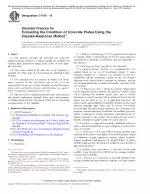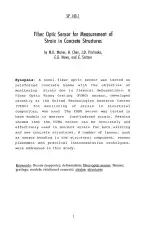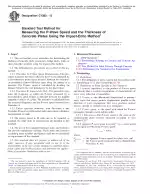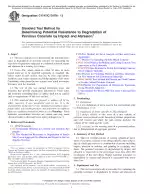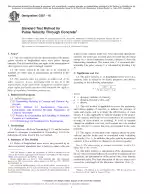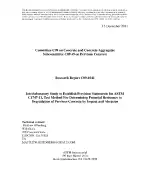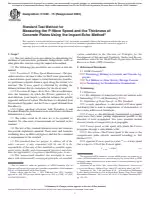ASTM C1740-16 PDF Download
Standard EN SampleStandard Practice for Evaluating the Condition of Concrete Plates Using the Impulse-Response Method
Also Known As:
ASTM C1740-16 is a standard practice that outlines the procedure for evaluating the condition of concrete plates using the impulse-response method. This method is commonly used to assess the condition of concrete slabs, pavements, bridge decks, walls, or other plate-like structures. It is designed for rapid screening of these structures, helping to identify potential areas of concern that may require further investigation.
The standard emphasizes that the impulse-response method is not suitable for integrity testing of piles. For such applications, Test Method D5882 should be referred to. However, the practice can be used to locate delaminated or poorly consolidated concrete, as well as regions of inadequate support or voids beneath slabs supported on the ground.
Results obtained from the impulse-response method are typically used on a comparative basis. This means that the quality of concrete or support conditions at one point in the tested structural element can be compared with conditions at other points in the same element, or with another element of the same geometry. Invasive probing or drilling of cores is often required to confirm the interpretations of the impulse-response results.
The standard notes that variations in concrete properties, such as age, batch-to-batch variability, or placement and consolidation practices, can cause variations in measured mobility and dynamic stiffness within a plate element of constant thickness. It also specifies that the effective radius of influence of the hammer blow limits the maximum concrete element thickness that can be tested, with the apparatus defined in the practice suitable for thicknesses less than 1 meter.
The practice acknowledges that results obtained for highway applications may be influenced by traffic noise or low-frequency structural vibrations caused by the movement of vehicles. However, testing during traffic flow on adjacent portions of the structure may be possible due to the intermittent nature of these noises. It also highlights that heavy loads on suspended slabs, debris on the test surface, mechanical equipment impacting the structure, and electrical noise can affect test results and should be taken into consideration.
| Descriptors | walls, pavements, dynamic stiffness, impulse response method,Concrete Plates,Bridge Decks,Roads and Pavements,Stiffness,Walls and Wall Assemblies |
| ICS Codes | 91.100.30 - Concrete and concrete products |
| Language(s) | English |
| File Size | 450.6 KB |

